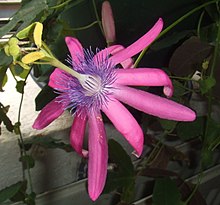
Passiflora, known also as the passion flowers or passion vines, is a genus of about 550 species of flowering plants, the type genus of the family Passifloraceae.

William John Swainson FLS, FRS, was an English ornithologist, malacologist, conchologist, entomologist and artist.

Floristry is the production, commerce, and trade in flowers. It encompasses flower care and handling, floral design, or flower arranging, merchandising, production, display and flower delivery. Wholesale florists sell bulk flowers and related supplies to professionals in the trade. Retail florists offer fresh flowers and related products and services to consumers. The first flower shop opened in 1875.
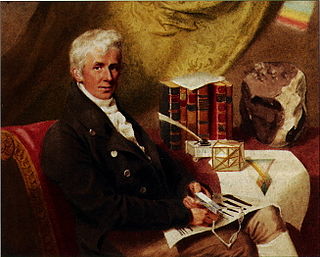
James Sowerby was an English naturalist, illustrator and mineralogist. Contributions to published works, such as A Specimen of the Botany of New Holland or English Botany, include his detailed and appealing plates. The use of vivid colour and accessible texts were intended to reach a widening audience in works of natural history. The standard author abbreviation Sowerby is used to indicate this person as the author when citing a botanical name.

Franz Julius Ferdinand Meyen was a Prussian physician and botanist.

John Lindley FRS was an English botanist, gardener and orchidologist.
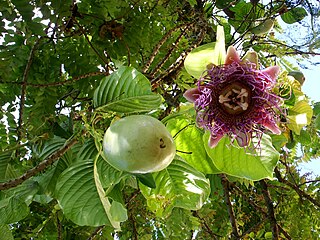
Passiflora quadrangularis, the giant granadilla, barbadine (Trinidad), grenadine (Haiti), giant tumbo or badea, is a species of plant in the family Passifloraceae. It produces the largest fruit of any species within the genus Passiflora. It is a perennial climber native to the Neotropics.
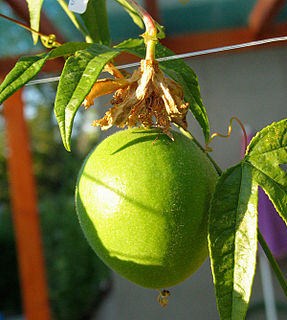
Passiflora incarnata, commonly known as maypop, purple passionflower, true passionflower, wild apricot, and wild passion vine, is a fast-growing perennial vine with climbing or trailing stems. A member of the passionflower genus Passiflora, the maypop has large, intricate flowers with prominent styles and stamens. One of the hardiest species of passionflower, it is both found as a wildflower in the southern United States and in cultivation for its fruit and striking bluish purple blooms. Passiflora incarnata fruit contain many seeds, each surrounded by an aril holding edible juice, and this juice can be consumed fresh or used to flavor processed products.

Alexander von Nordmann was a 19th-century Finnish biologist, who contributed to zoology, parasitology, botany and paleontology.
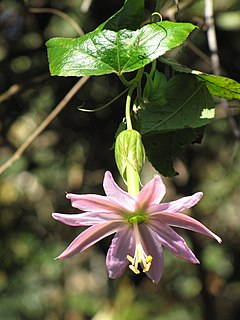
Passiflora tarminiana is a species of passionfruit. The yellow fruits are edible and their resemblance to small, straight bananas has given it the name banana passionfruit in some countries. It is native to the uplands of tropical South America and is now cultivated in many countries. In Hawaii and New Zealand it is now considered an invasive species. It was given the name banana passionfruit in New Zealand, where passionfruit are also prevalent. In Hawaii, it is called banana poka. In its Latin American homeland, it is known as curuba, curuba de Castilla, or curuba sabanera blanca (Colombia); taxo, tacso, tagso, tauso (Ecuador); parcha, taxo (Venezuela), tumbo or curuba (Bolivia); tacso, tumbo, tumbo del norte, trompos, tintin or purpur (Peru).

Nectar is a sugar-rich liquid produced by plants in glands called nectaries or nectarines, either within the flowers with which it attracts pollinating animals, or by extrafloral nectaries, which provide a nutrient source to animal mutualists, which in turn provide herbivore protection. Common nectar-consuming pollinators include mosquitoes, hoverflies, wasps, bees, butterflies and moths, hummingbirds, honeyeaters and bats. Nectar plays a crucial role in the foraging economics and evolution of nectar-eating species; for example, nectar foraging behavior is largely responsible for the divergent evolution of the African honey bee, A. m. scutellata and the western honey bee.
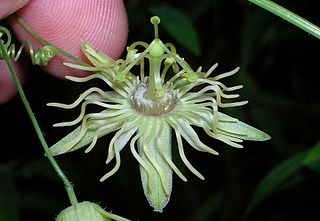
Passiflora lutea, the yellow passionflower, is a flowering plant in the family Passifloraceae, native North America, in the eastern and south-central parts of the United States from Pennsylvania west to Kansas, and south to Florida and Texas. It is the northernmost species of Passiflora, occurring slightly further north than P. incarnata, and tolerant of winter temperatures down to −15 °C, and even −30 °C for short periods.
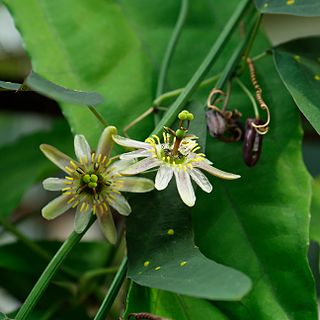
Passiflora biflora, the twoflowered passionflower, is a vine with paired peduncles and flowers up to 3.5 cm (1.4 in) wide. It is native to the New World from Mexico to Colombia and Venezuela. In Florida, P. biflora has been classified by the Exotic Pest Plant Council as a non-native species that has the "potential to disrupt native plant communities."
Passion fruit woodiness virus (PWV) is a plant pathogenic virus in the genus Potyvirus and the virus family Potyviridae. Like other members of the genus Potyvirus, PWV is a monopartite strand of positive-sense, single-stranded RNA surrounded by a capsid made for a single viral encoded protein. The virus is a filamentous particle that measures about 745 nm in length.

Passiflora mixta, from the family Passifloraceae is also known as curuba, curuba de indio, curuba de monte, curubita, curuba (Colombia), parcha (Venezuela), and taxo (Ecuador). Originally, it derived from the monophyletic Adeans Passiflora subgenus Tacsonia. Passiflora includes 47 species, one of which is Passiflora mixta which can be found in Southern America. A perennial vine, the Passiflora mixta is pink to orange-red in color.

Passiflora bryonioides, the cupped passionflower, is a plant in the genus Passiflora, family Passifloraceae. It is native to northern Mexico and the south-western United States (Arizona).
Passiflora viridescens is a plant species native to Perú and Ecuador.
George Beauchamp Knowles (1790–1862) was an English botanist and a professor at the Royal School of Medicine and Surgery of Birmingham. He worked in close cooperation with Frederic Westcott on the taxonomy of orchids.
Frederic Westcott was an English botanist. He worked in close cooperation with George Beauchamp Knowles on the taxonomy of orchids.
